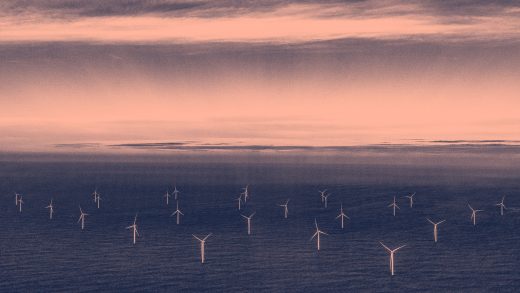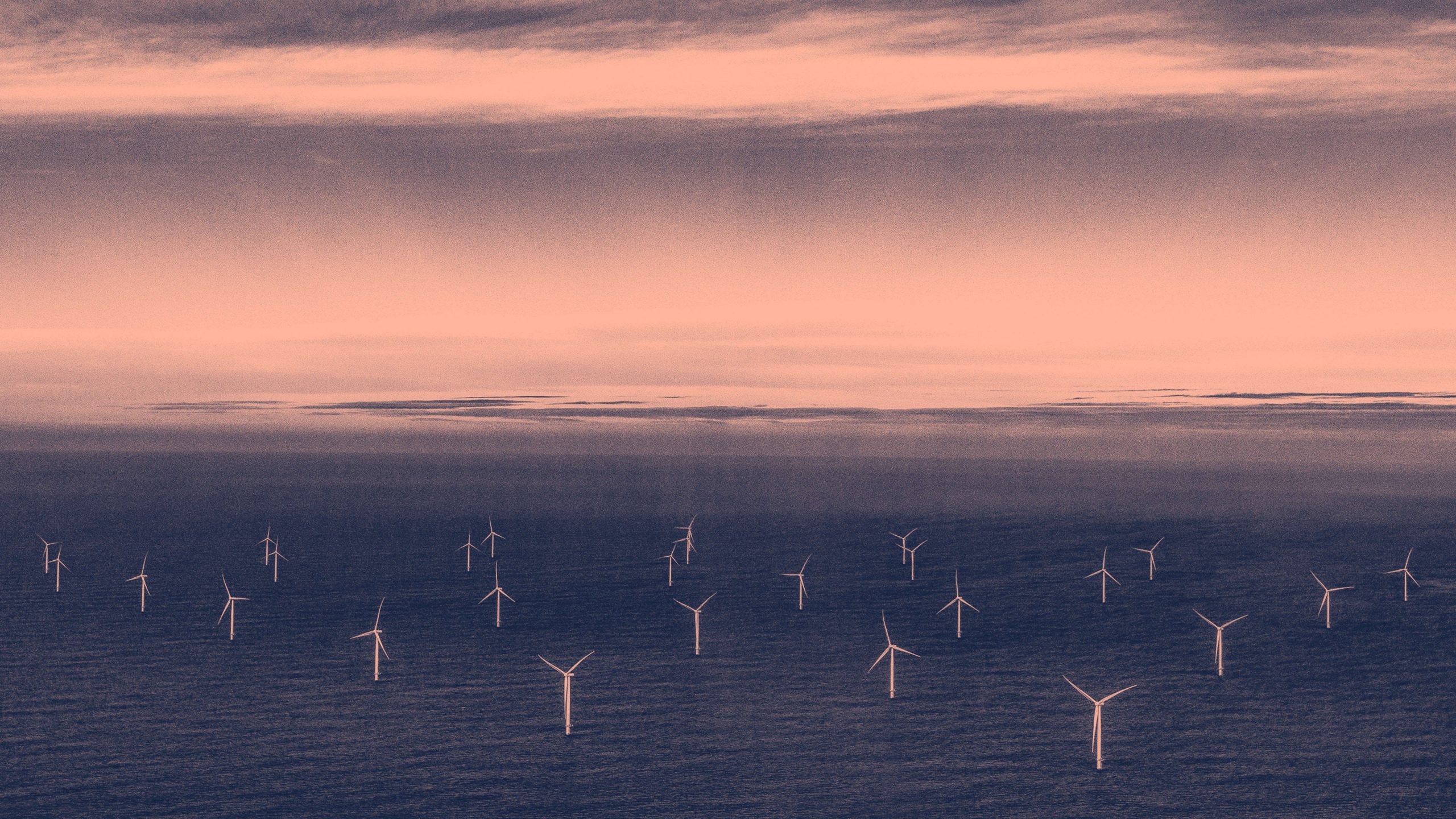What’s happening to the offshore wind industry and can it recover?
What’s happening to the offshore wind industry and can it recover?
Altogether, projects that had been canceled by the end of 2023 were expected to total more than 12 gigawatts of power, representing more than half the capacity in the project pipeline.
America’s first large-scale offshore wind farms began sending power to the Northeast in early 2024, but a wave of wind farm project cancellations and rising costs have left many people with doubts about the industry’s future in the U.S.
Several big hitters, including Ørsted, Equinor, BP and Avangrid, have canceled contracts or sought to renegotiate them in recent months. Pulling out meant the companies faced cancellation penalties ranging from US$16 million to several hundred million dollars per project. It also resulted in Siemens Energy, the world’s largest maker of offshore wind turbines, anticipating financial losses in 2024 of around $2.2 billion.
Altogether, projects that had been canceled by the end of 2023 were expected to total more than 12 gigawatts of power, representing more than half of the capacity in the project pipeline.
So, what happened, and can the U.S. offshore wind industry recover?
I lead UMass Lowell’s Center for Wind Energy Science Technology and Research WindSTAR and Center for Energy Innovation and follow the industry closely. The offshore wind industry’s troubles are complicated, but it’s far from dead in the U.S., and some policy changes may help it find firmer footing.
Long approval process’s cascade of challenges
Getting offshore wind projects permitted and approved in the U.S. takes years and is fraught with uncertainty for developers, more so than in Europe or Asia.
Before a company bids on a U.S. project, the developer must plan the procurement of the entire wind farm, including making reservations to purchase components such as turbines and cables, construction equipment and ships. The bid must also be cost-competitive, so companies have a tendency to bid low and not anticipate unexpected costs, which adds to financial uncertainty and risk.
The winning U.S. bidder then purchases an expensive ocean lease, costing in the hundreds of millions of dollars. But it has no right to build a wind project yet.
Before starting to build, the developer must conduct site assessments to determine what kind of foundations are possible and identify the scale of the project. The developer must consummate an agreement to sell the power it produces, identify a point of interconnection to the power grid, and then prepare a construction and operation plan, which is subject to further environmental review. All of that takes about five years, and it’s only the beginning.
For a project to move forward, developers may need to secure dozens of permits from local, tribal, state, regional and federal agencies. The federal Bureau of Ocean Energy Management, which has jurisdiction over leasing and management of the seabed, must consult with agencies that have regulatory responsibilities over different aspects in the ocean, such as the armed forces, Environmental Protection Agency and National Marine Fisheries Service, as well as groups including commercial and recreational fishing, Indigenous groups, shipping, harbor managers and property owners.
For Vineyard Wind I – which began sending power from five of its 62 planned wind turbines off Martha’s Vineyard in early 2024 – the time from BOEM’s lease auction to getting its first electricity to the grid was about nine years.
Costs can balloon during the regulatory delays
Until recently, these contracts didn’t include any mechanisms to adjust for rising supply costs during the long approval time, adding to the risk for developers.
From the time today’s projects were bid to the time they were approved for construction, the world dealt with the COVID-19 pandemic, inflation, global supply chain problems, increased financing costs and the war in Ukraine. Steep increases in commodity prices, including for steel and copper, as well as in construction and operating costs, made many contracts signed years earlier no longer financially viable.
New and re-bid contracts are now allowing for price adjustments after the environmental approvals have been given, which is making projects more attractive to developers in the U.S. Many of the companies that canceled projects are now rebidding.
The regulatory process is becoming more streamlined, but it still takes about six years, while other countries are building projects at a faster pace and larger scale.
Shipping rules, power connections
Another significant hurdle for offshore wind development in the U.S. involves a century-old law known as the Jones Act.
The Jones Act requires vessels carrying cargo between U.S. points to be U.S.-built, U.S.-operated and U.S.-owned. It was written to boost the shipping industry after World War I. However, there are only three offshore wind turbine installation vessels in the world that are large enough for the turbines proposed for U.S. projects, and none are compliant with the Jones Act.
That means wind turbine components must be transported by smaller barges from U.S. ports and then installed by a foreign installation vessel waiting offshore, which raises the cost and likelihood of delays.
Dominion Energy is building a new ship, the Charybdis, that will comply with the Jones Act. But a typical offshore wind farm needs over 25 different types of vessels – for crew transfers, surveying, environmental monitoring, cable-laying, heavy lifting and many other roles.
The nation also lacks a well-trained workforce for manufacturing, construction and operation of offshore wind farms.
For power to flow from offshore wind farms, the electricity grid also requires significant upgrades. The Department of Energy is working on regional transmission plans, but permitting will undoubtedly be slow.
Lawsuits, disinformation add to the challenges
Numerous lawsuits from advocacy groups that oppose offshore wind projects have further slowed development.
Wealthy homeowners have tried to stop wind farms that might appear in their ocean view. Astroturfing groups that claim to be advocates of the environment, but are actually supported by fossil fuel industry interests, have launched disinformation campaigns.
In 2023, many Republican politicians and conservative groups immediately cast blame for whale deaths off the coast of New York and New Jersey on the offshore wind developers, but the evidence points instead to increased ship traffic collisions and entanglements with fishing gear.
Such disinformation can reduce public support and slow projects’ progress.
Efforts to keep the offshore wind industry going
The Biden administration set a goal to install 30 gigawatts of offshore wind capacity by 2030, but recent estimates indicate that the actual number will be closer to half that.
Despite the challenges, developers have reason to move ahead.
The Inflation Reduction Act provides incentives, including federal tax credits for the development of clean energy projects and for developers that build port facilities in locations that previously relied on fossil fuel industries. Most coastal state governments are also facilitating projects by allowing for a price readjustment after environmental approvals have been given. They view offshore wind as an opportunity for economic growth.
These financial benefits can make building an offshore wind industry more attractive to companies that need market stability and a pipeline of projects to help lower costs – projects that can create jobs and boost economic growth and a cleaner environment.
Christopher Niezrecki is the director of the Center for Energy Innovation at UMass Lowell.
This article is republished from The Conversation under a Creative Commons license. Read the original article.
ABOUT THE AUTHOR
(51)



